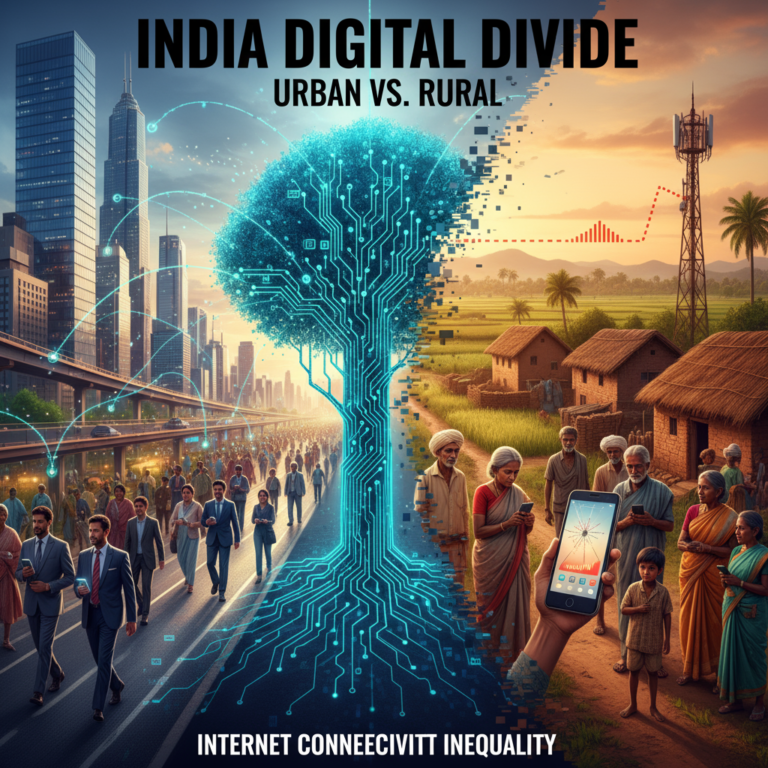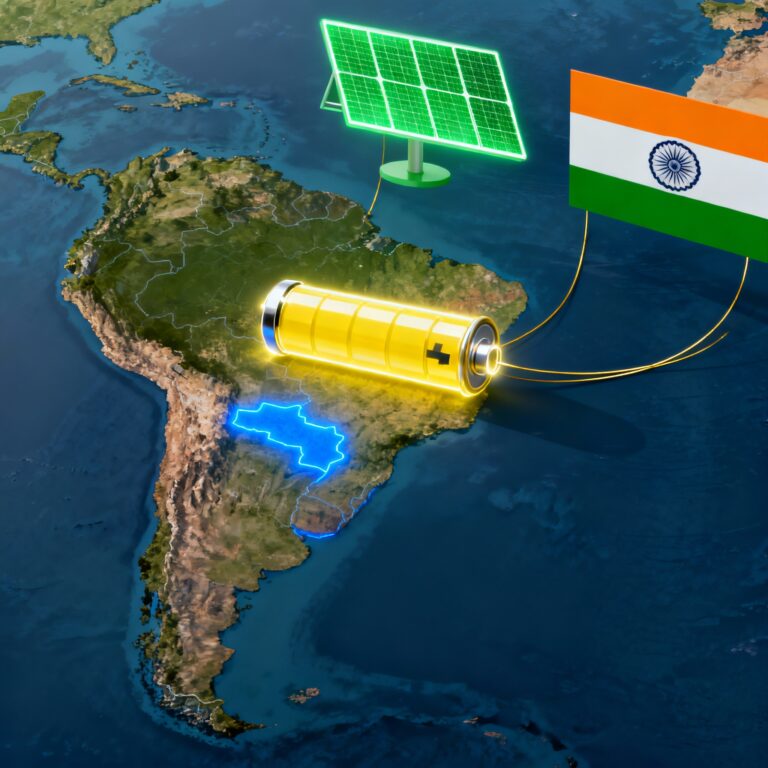Key Highlights
- Coverage Transformation: Full immunisation coverage increased from 62% (NFHS-4) to 76.4% (NFHS-5), with U5MR declining by 78% surpassing global average of 61%
- Digital Innovation: Co-WIN platform registered 950+ million citizens for COVID-19 vaccination, while U-WIN creates world’s largest electronic immunisation registry with 40+ million beneficiaries
- Global Leadership: Polio eradication (2014) and Vaccine Maitri supplied 3,012 lakh vaccine doses to 101 countries, demonstrating India’s soft power diplomacy
- Equity Challenges: Zero-dose children reduced from 0.11% to 0.06%, but disparities persist among scheduled tribes (4.1%), Muslims (5.4%), and poorest quintile (4.6%)
- Future Readiness: Indigenous mRNA vaccine development, AI-enabled supply chains, and National Digital Health Mission integration position India for pandemic preparedness and SDG-3 achievement.
India’s Universal Immunisation Programme (UIP), launched in 1985, stands as one of the world’s largest and most comprehensive vaccination initiatives, annually reaching 2.67 crore newborns and 2.9 crore pregnant women. This public health success story demonstrates how systematic policy intervention, technological innovation, and sustained commitment can dramatically transform population health outcomes while addressing persistent equity challenges.
Evolution and Scale of India’s Immunisation Journey
Historical Foundation and Growth
The UIP emerged from India’s Expanded Programme of Immunisation (EPI) established in 1978, initially targeting urban areas. The transformation to UIP in 1985 marked a strategic shift toward universal coverage, extending vaccination services beyond urban centers to rural and remote areas.
Initially providing vaccines against six diseases (tuberculosis, diphtheria, pertussis, tetanus, poliomyelitis, and measles), the program has expanded to cover 12 vaccine-preventable diseases. Key additions include hepatitis B (2007-2008), Haemophilus influenzae type b (Hib), rotavirus, pneumococcal conjugate vaccine (PCV), and measles-rubella vaccines.
Impressive Coverage Achievements
The program’s impact is evident in full immunisation coverage improvements. NFHS-5 data shows coverage increased from 62% (NFHS-4) to 76.4%, representing a 14.6 percentage point increase. Some states demonstrate exceptional performance—Odisha leads with 90.5% coverage, while challenges persist in states like Nagaland (57.9%).
More remarkably, India achieved a 78% decline in Under-Five Mortality Rate (U5MR), surpassing the global reduction of 61%. Neonatal Mortality Rate declined by 70% compared to 54% globally during 1990-2023.
Mission Indradhanush: Strategic Intensification
Targeted Intervention Strategy
Mission Indradhanush, launched in December 2014, represents India’s strategic response to coverage gaps. The mission specifically targets partially and unvaccinated children in areas with low immunisation coverage, high-risk populations, and hard-to-reach communities.
Intensified Mission Indradhanush (IMI) demonstrated remarkable results. A survey in 190 districts showed an 18.5 percentage point increase in full immunisation coverage compared to NFHS-4. The first two phases alone resulted in a 6.7% increase in full immunisation coverage within one year.
Comprehensive Coverage Strategy
Through ten phases of Mission Indradhanush, 701 districts across India have been covered. The program has vaccinated 3.86 crore children and 96.8 lakh pregnant women as of April 2021. The flexible approach allows states to adapt implementation schedules, as demonstrated during COVID-19 when states could choose between February-April or March-May 2022 timeframes.
Digital Revolution in Immunisation
Co-WIN: COVID-19 Success Story
The COVID-19 Vaccine Intelligence Network (Co-WIN) emerged as a global benchmark for digital vaccination management. The platform facilitated registration of over 950 million citizens and administered more than 1.6 billion vaccine doses.
Co-WIN’s sophisticated features include real-time dose tracking using QR-based certificates, minimum interval maintenance between doses, same vaccine type administration for second doses, and adverse event monitoring. The platform conducted over 20.5 million vaccination sessions across 470,000 centers, with 73% in rural areas.
U-WIN: Universal Immunisation Integration
U-WIN (Universal Immunization Win) represents the evolution of digital immunisation management. Currently in pilot phase, it has registered over 40 million beneficiaries and recorded 125 million vaccine doses.
The platform integrates 185,000 healthcare facilities and connects with the Ayushman Bharat Digital Mission, Healthcare Professional Registry, and Healthcare Facility Registry. This comprehensive integration creates the world’s largest electronic immunisation registry.
eVIN: Supply Chain Excellence
The electronic Vaccine Intelligence Network (eVIN) revolutionized vaccine logistics management. The system provides real-time stock visibility, prevents cold chain breakdowns, reduces vaccine wastage, and enables evidence-based distribution planning.
eVIN’s impact is measurable: it ensures timely vaccine distribution, prevents stockout situations, and maintains optimal storage conditions throughout the supply chain. The system contributed significantly to both routine immunisation and COVID-19 vaccination success.
Polio Eradication: Global Leadership Demonstrated
Historic Achievement
India’s polio-free status achieved in 2014 represents one of global health’s greatest victories. The country was declared polio-free after three years without endemic cases, graduating from being one of the four endemic countries.
The World Bank provided over $640 million toward India’s polio eradication efforts from 2000-2013. The success required unprecedented coordination involving millions of vaccinators, meticulous micro-planning, and innovative surveillance systems.
Strategic Innovations
India pioneered key operational and technical strategies that became global best practices. The country established a world-class surveillance system, reliable laboratory networks, and rigorous monitoring frameworks. Celebrity endorsements, including Bollywood film-stars, enhanced public awareness and acceptance.
The Acute Flaccid Paralysis (AFP) Surveillance and Environmental Surveillance systems enabled rapid detection and response to potential outbreaks. This comprehensive approach became the foundation for India’s broader immunisation success.
Vaccine Maitri: Global Health Diplomacy
International Leadership
India’s “Vaccine Maitri” (Vaccine Friendship) initiative demonstrates global health leadership. Under this program, India supplied 3,012.465 lakh doses to 101 countries as of June 2023. The distribution included 151.270 lakh doses as grants, 2,340.925 lakh doses commercially, and 520.270 lakh doses through COVAX.
This initiative reinforced India’s position as the “pharmacy of the world” while demonstrating soft power diplomacy through humanitarian outreach. India’s global vaccine distribution particularly benefited South Asian neighbors, African nations, and UN peacekeeping missions.
Recognition and Awards
India received the prestigious Measles and Rubella Champion Award from The Measles and Rubella Partnership at the American Red Cross Headquarters in Washington, DC, on March 6, 2024. This recognition acknowledges India’s committed efforts toward global immunisation goals.
Persistent Equity Challenges
Rural-Urban and Socioeconomic Disparities
Despite overall progress, significant equity gaps persist. NFHS-5 analysis reveals that scheduled tribes (4.1%), Muslim populations (5.4%), and the poorest wealth quintile (4.6%) exhibit higher absolute zero-dose prevalence.
Children lacking vaccination cards experience 21.2% higher absolute zero-dose cases. Rural areas consistently show lower coverage compared to urban centers, with variations ranging from 79.8% to 87.7% for BCG coverage.
Geographic and Religious Disparities
Northeastern states face particular challenges. Spatial analysis reveals hotspots of Hepatitis B non-coverage in Nagaland, Manipur, parts of Meghalaya, and Assam. Multiscale Geographically Weighted Regression identifies poverty, higher birth order, limited media exposure, and private healthcare seeking as significant predictors.
Religious minorities show concerning patterns. Studies indicate lower immunisation rates among Muslim families at national and state levels. Cultural barriers, misinformation, and access constraints contribute to these disparities.
Gender and Age-Specific Gaps
Within partially vaccinated children (20%), 42.8% show zero dose for measles-containing vaccines. Measles antibody seroprevalence studies in urban Mumbai found 37 (17.3%) women seronegative, with only 143 (66.8%) having adequate antibodies to protect infants.
Way Forward: Future Priorities and Innovation
mRNA Vaccine Development
India’s indigenous innovation capabilities expanded during COVID-19. The country developed four indigenous vaccines: ZyCoV-D (DNA vaccine), CORBEVAX (protein subunit), GEMCOVAC-19 (mRNA), and iNCOVACC (intranasal). These achievements under Mission COVID Suraksha demonstrate India’s vaccine development potential.
mRNA vaccine technology represents the future of rapid vaccine development. India’s GEMCOVAC-19, the world’s first indigenous mRNA vaccine, positions the country for future pandemic preparedness.
AI-Enabled Supply Chain Integration
Future immunisation success requires AI-enabled supply chain optimization. Integration of machine learning algorithms with eVIN can predict demand patterns, prevent stockouts, and optimize cold chain efficiency. Predictive analytics can identify high-risk areas requiring intensified intervention.
Real-time monitoring systems using IoT sensors can ensure vaccine quality throughout the distribution network. Blockchain technology can enhance vaccine authenticity verification and prevent counterfeit products.
National Digital Health Mission Integration
The Ayushman Bharat Digital Mission integration with U-WIN creates comprehensive health records. This interoperable digital stack enables seamless patient care, evidence-based planning, and outcome monitoring.
Health ID integration ensures portable immunisation records, crucial for India’s mobile population. Telemedicine integration can provide vaccination counseling and follow-up services, particularly in remote areas.
Linking to SDG-3: Global Health Goals
Health and Well-being Targets
India’s UIP directly contributes to SDG-3 (Good Health and Well-being) targets. The 78% reduction in U5MR and 86% decline in Maternal Mortality Ratio demonstrate progress toward universal health coverage goals.
Zero-dose children declined from 0.11% in 2023 to 0.06% in 2024, approaching universal immunisation targets. The annual coverage of 2.67 crore newborns ensures population-level protection against vaccine-preventable diseases.
Global Health Security
India’s immunisation program contributes to global health security through herd immunity development and outbreak prevention. The polio eradication success demonstrates how national programs can eliminate global disease threats.
Vaccine manufacturing capabilities and diplomatic initiatives position India as a global health security provider. The Vaccine Maitri program exemplifies how national success can generate global public goods.
Economic and Social Impact
Long-term Development Benefits
Longitudinal studies demonstrate UIP’s broader development impacts. Research shows associations between childhood vaccination and improved adult schooling attainment, indicating long-term human capital benefits.
Cost-effectiveness analysis reveals immunisation as one of the most efficient health interventions. The Under-5 mortality reduction from 45 per 1000 (2014) to 32 per 1000 (2020) represents substantial economic savings through reduced healthcare costs and productivity gains.
Healthcare System Strengthening
UIP implementation strengthened India’s primary healthcare infrastructure. The 2.9 lakh ASHA workers, health centers, and cold chain networks create robust foundations for broader health services.
Digital platforms developed for immunisation provide scalable solutions for other health programs. Co-WIN’s success during COVID-19 demonstrates how immunisation infrastructure can rapidly adapt to emerging challenges.
Conclusion
India’s Universal Immunisation Programme exemplifies how systematic public health intervention, technological innovation, and sustained political commitment can achieve remarkable population health transformation. The journey from 62% to 76.4% full immunisation coverage, 78% reduction in U5MR, and polio eradication demonstrates the program’s profound impact.
However, persistent equity challenges require continued attention. Rural-urban disparities, socioeconomic gaps, and religious minority access constraints demand targeted interventions and community-specific strategies. The zero-dose children focus and Mission Indradhanush intensification show promising approaches.
The digital revolution through Co-WIN, U-WIN, and eVIN positions India as a global leader in health technology innovation. These platforms provide scalable solutions for both routine immunisation and emergency response.
Looking forward, mRNA vaccine development, AI-enabled supply chains, and digital health integration will determine India’s continued immunisation success. The National Digital Health Mission integration promises comprehensive health records and evidence-based planning capabilities.
India’s Vaccine Maitri diplomacy and global health leadership demonstrate how national public health success can generate international goodwill and soft power influence. As the world faces future pandemic threats, India’s immunisation program provides a blueprint for combining domestic health goals with global health security.
The UIP’s evolution from a basic vaccination program to a comprehensive digital health platform illustrates India’s capacity for health system innovation. Achieving SDG-3 targets requires sustaining this momentum while addressing remaining equity challenges and preparing for future health security threats.
Possible Mains Questions
- “India’s Universal Immunisation Programme demonstrates how digital innovation can enhance public health delivery while addressing equity challenges.” Analyze the role of platforms like Co-WIN and U-WIN in transforming vaccination coverage and their potential for broader healthcare applications. (250 words)
- Examine India’s success in polio eradication and Vaccine Maitri diplomacy. How do these achievements contribute to India’s global health leadership and soft power projection? Discuss the lessons for future pandemic preparedness. (250 words)
- “Despite impressive improvements in immunisation coverage, equity gaps persist across rural-urban, socioeconomic, and religious lines.” Critically analyze the challenges in achieving universal coverage and suggest strategies to address remaining disparities. (250 words)









+ There are no comments
Add yours